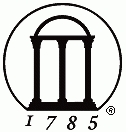A major problem in representation theory has been
the determination of a character formula and the dimensions of
finite dimensional simple modules over a connected reductive
algebraic group G. Lusztig conjectured that the characters
could be computed recursively in terms of “Kazhdan-Lusztig” polynomials.
These polynomials arise from the Hecke algebra associated with
the Weyl group of the given algebraic group. It turns out that this
conjecture is true for very large primes (for fields of positive characteristic)
and in recent work Williamson has shown that there are counterexamples to the original conjecture.
One of the goals of this course is to introduce the terminology
and ideas used in formulating the Lusztig conjecture. For
this purpose most of the material will be taken from
Jantzen’s “Representations of Algebraic Groups”.
In the first part of the course we will introduce the basic notions in representation
theory and classify the finite dimensional simple modules for a reductive algebraic
group G. This will entail using the geometry of the flag variety G/B and looking at
global sections of line bundles for G/B. Later we will discuss classical theorems
involving these G-modules such as Kempf’s vanishing theorem, the Bott-Borel-Weil theorem,
and Weyl’s Character Theorem.
Additional topics may include, cohomology and representations of Frobenius kernels
$G_{r}$ and related module categories $G_{r}T$ and $G_{r}B$, Strong Linkage Principle,
injective $G_{r}$ modules, Steinberg’s twisted tensor product formula, and the Translation Principle.
In this course we will use an interesting mix of tools from algebra, topology and
algebraic geometry.
Recommended reading list:
J.E. Humphreys, Introduction to Lie Algebras and Representation
Theory, Springer-Verlag, 1970.
J.C. Jantzen, Representations of Algebraic Groups, American Math.
Soc., 2004.
W.C. Waterhouse, Introduction to Affine Group Schemes,
Springer-Verlag, 1979.
